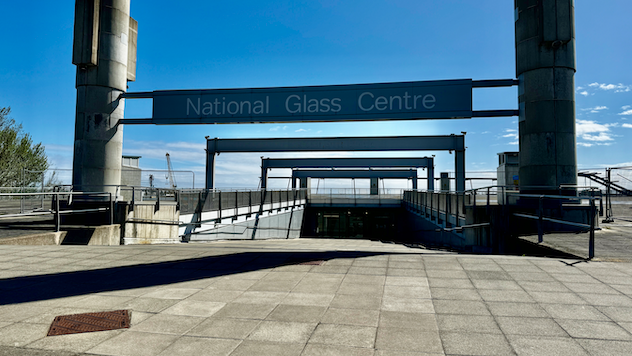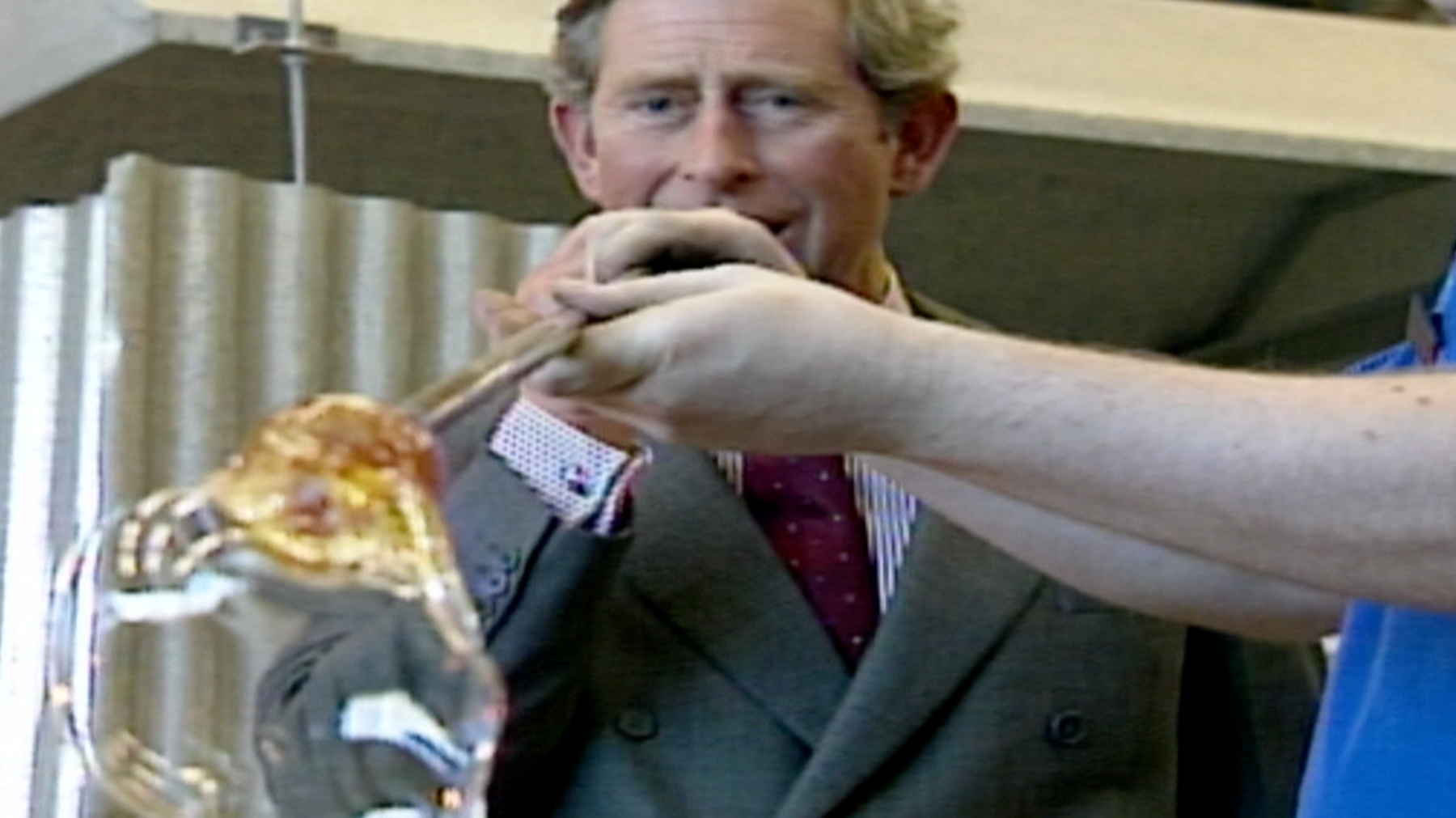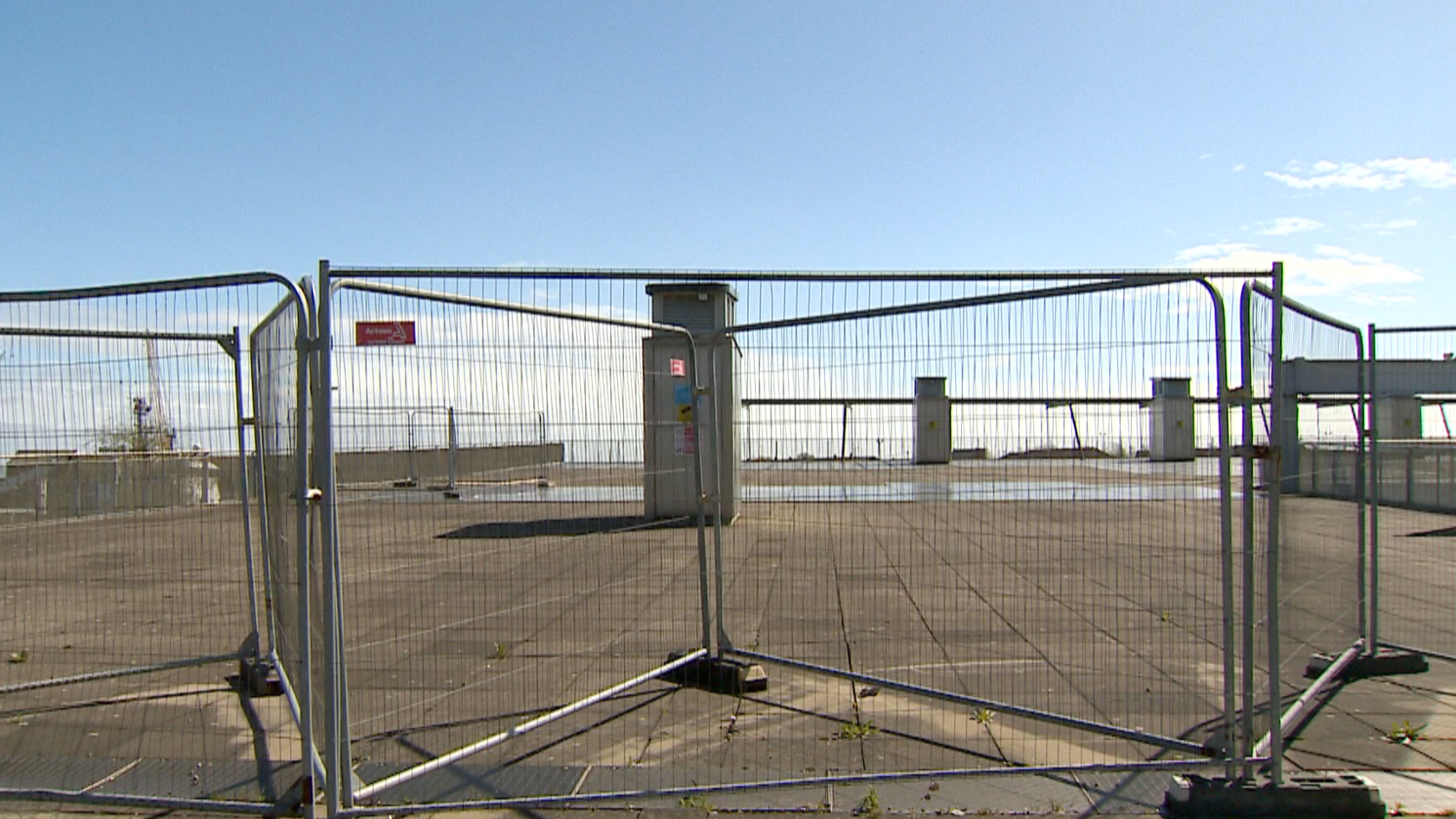Why is the National Glass Centre closing?

The building and land is owned by the University of Sunderland, which proposes closing the centre
- Published
The National Glass Centre, external, which opened to much fanfare in 1998, is marked for closure in 2026. The Sunderland landmark faces multimillion-pound repairs, although the total cost is disputed by campaigners. But why is it so important to so many?
What is the National Glass Centre?
Sitting on the north bank of the River Wear, it is an imposing steel and glass structure which cost £17m to build.
It was the first building in north-east England to be funded by the Arts Lottery, according to Sunderland Culture, external.
The attraction was built in part to honour the city's rich history in glassmaking, which dates back to 673AD when Benedict Biscop brought glaziers in to work on St Peter's monastery.
In more recent times, brands such as Pyrex formed part of the local landscape until its Wearside factory closed in 2007.
Prince Charles, now the King, created some of the first works of glass art at the site when he declared the centre open in October 1998.

The National Glass Centre was officially opened by Prince Charles
Today it is home to glassmaking workshops, university courses, exhibition spaces and the Northern Gallery for Contemporary Art, external.
It is also a tourist attraction and houses a cafe and gift shop.
Who owns it?
The building and the land it sits on is owned by the University of Sunderland, which has been the custodian since 2010.
The institution took over the site after a tumultuous few years where it struggled to sustain visitor numbers and was hit with administrative difficulties.
In 2013, vice-chancellor Professor Peter Fidler said the centre was an "important cultural venue" and vowed to "put forward a vision that would make it a venue with national significance".
Why is it closing?
Rewind to the turn of 2023 when Sunderland University announced plans to relocate the National Glass Centre.
This was prompted by the need for multimillion-pound repairs to the structure, including the glass roof which was once an attraction in itself.
It had remained closed to the public for about three years because of broken glazing.
The building has also suffered from rust, corrosion and leaks.
The university commissioned reports to establish the costs, external of repairs to the roof and overall structure, as well as work on mechanical and electrical features inside the building.

The glass roof has been off limits to the public for years
In short, the university believes it could cost between £14m and £45m to carry out safety and remedial works.
It claims it cannot justify those costs as it is largely funded by tuition fees and already spends about £1.7m per year keeping the centre open.
How do locals feel?
The news has been met with significant criticism from locals, photographers, artists and future students.
More than 33,000 people have signed a petition urging university bosses to stump up the cash for repairs and save the building from closure.
Many have taken to social media to raise their concerns, saying it would be a loss of a Sunderland landmark.
Save the National Glass Centre says the university simply does not want to run it and alleges a lack of maintenance.

Jo Howell leads the Save the National Glass Centre campaign
Campaign leader Jo Howell also claims the repair costs have been inflated to help support a case to wind down the site.
But university chief operating officer Andrea Walters strongly denies this and points to quotes from experts in the field.
Could it be saved?
Yes, say campaigners.
They have told the BBC there is enough support from industry and heritage organisations to form a non-profit group to take on the site.
Save the National Glass Centre says remedial works to the roof and structure can be carried out "much cheaper".
Campaigners say they are in the "early stages" of forming a unified group, but it will require the university to enter negotiations.
Ms Walters says it would "discuss" what campaigners had to say, but any decision "remains" the university's.
She says to date no other organisation has "been able to come forward to spend the tens of millions" needed to save the building.
What will happen to the land?
Should the centre not be taken over, the university plans to empty the building by summer 2026.
It has already announced the suspension of its glass and ceramics course beyond that date, but has said some facilities will find new homes at other locations in the city.
Ms Walters says the university would want to "avoid" having an empty building and would likely take steps to safely demolish it.
She says no decision on the land have been made beyond 2026.
Follow BBC Sunderland on X (formerly Twitter), external, Facebook, external and Instagram, external. Send your story ideas to northeastandcumbria@bbc.co.uk.
Related topics
- Published17 April 2024

- Published26 March 2024
